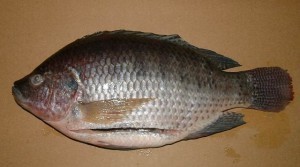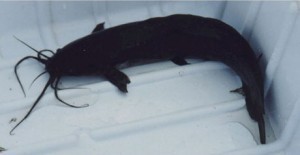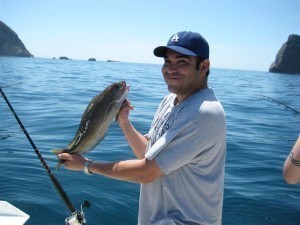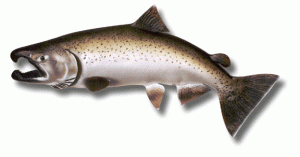Size of a Tilapia
The Tilapia is considered as the 3rd most important fish in aquaculture, next to the  salmonids and the carps. It is commonly grown commercially for food, but this freshwater species of cichlid fish have other uses, such as purifying water by consuming detritus, algae and other pestilent aquatic plants. However, tilapia can also become an invasive species themselves when introduced in a habitat they are not conducive to.
salmonids and the carps. It is commonly grown commercially for food, but this freshwater species of cichlid fish have other uses, such as purifying water by consuming detritus, algae and other pestilent aquatic plants. However, tilapia can also become an invasive species themselves when introduced in a habitat they are not conducive to.
The genus Tilapia, from which this class of fish gets its name, consists of around 40 species and is indigenous to Africa. Among these is the Zebra Tilapia (Tilapia buttikoferi) which largely inhabits the rivers and streams of West Africa, the Republic of Liberia in particular. It is usually colored white or yellow lined with black vertical stripes, but it is capable of changing its hue depending on its mood. It can reach up to 40 cm (15 in) in length.
Joka Tilapia is one of only a few species domesticated for home aquaria. Originally from West Africa, it grows to a common length of 20 cm (8 in) in the wild, but it grows not more than 12 cm (4.7) when kept in an aquarium.
The Spotted Tilapia (Tilapia mariae) is an aggressive, territorial species that thrives in both fresh and brackish waters. Also known as the Spotted Mangrove Cichlid and the Black Mangrove Cichlid, it typically achieves 300 mm in length.
One of approximately 30 species from the genus Oreochromis, the Blue Tilapia (Oreochromis aureus) is a freshwater species, although it is also highly-tolerant of brackish waters. Also known as the Israeli Tilapia, it originated from the Middle East and Africa, but is now also found in parts of the U.S., where it is regarded as something of a nuisance. It has an average adult length of 130-200 mm (5-8 in) and an average weight of 2.3-2.7 kg (5-6 lbs). However, the largest known of the species has been recorded at a size of over 530 mm (21 in) and weighing above 4.5 kg (10 lbs).
Also from the same genus, the Wami Tilapia (Oreochromis urolepis) is regarded as a significant food source in the islands of Zanzibar and the African nation of Tanzania. Taking its name from Tanzania’s Wami River, it also has a tolerance for brackish water as well as salt water, which makes it ideal for farming by seaside communities. It can reach a length of more than 20 cm.
The genus Sarotherodon is native to Israel and Africa and is comprised of around 10 species. One of these is the Mango Tilapia (Sarotherodon galilaeus), which is located in African and Eurasian waters. Thriving in temperatures as low as 9 degrees Celsius, it can achieve a length of up to 41 cm.
The Tilapia is alleged to have been referenced in the Holy Bible, the Gospel of Matthew to be precise, telling an account of the apostle St. Peter catching a fish that held a coin inside its mouth. While the species of the fish in question is not specifically stated, the Mango Tilapia is particularly prevalent in the Sea of Galilee, which is where the Gospel places the events of the story. It is because of this that the tilapia has also been tagged as “St. Peter’s Fish.”





